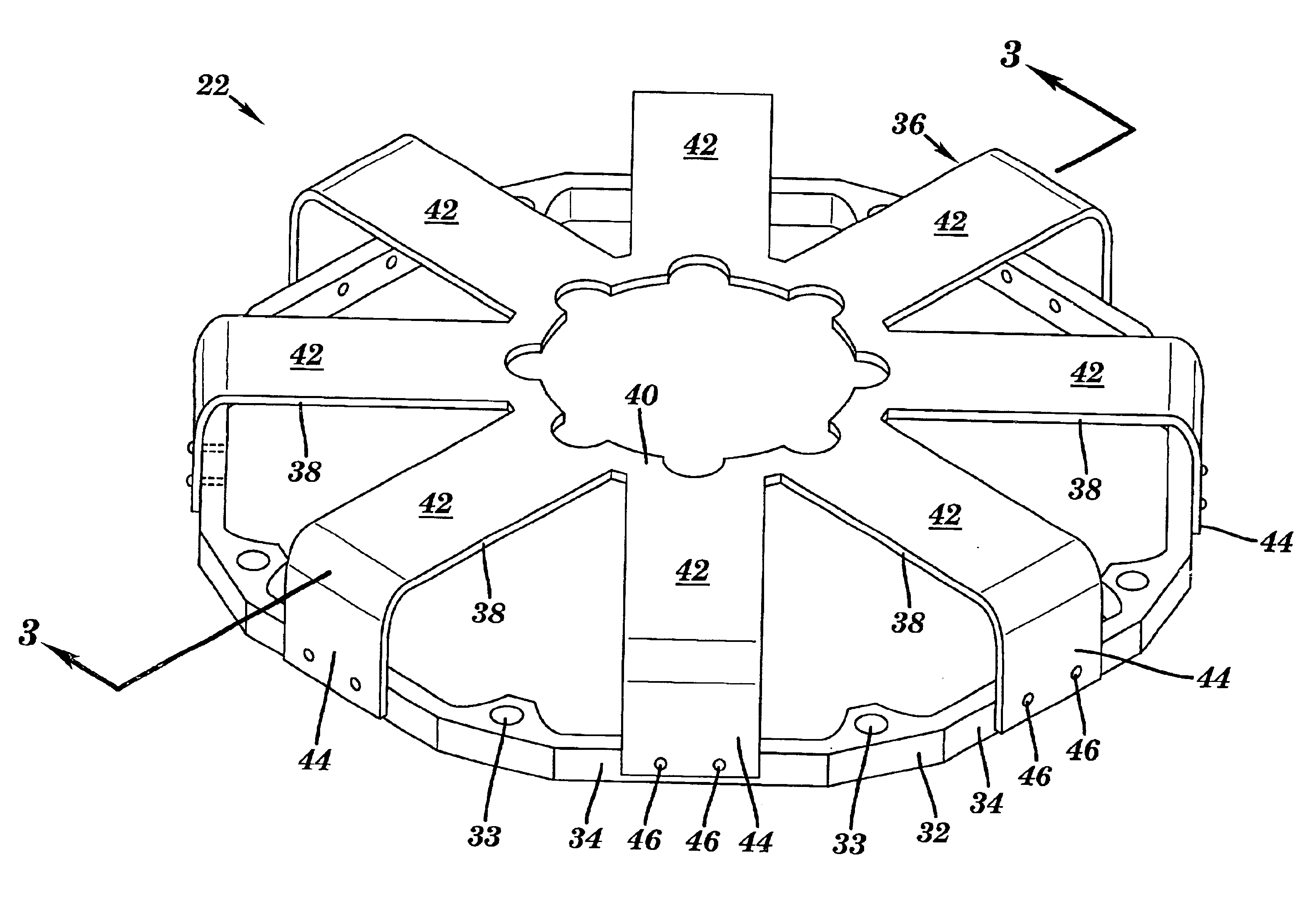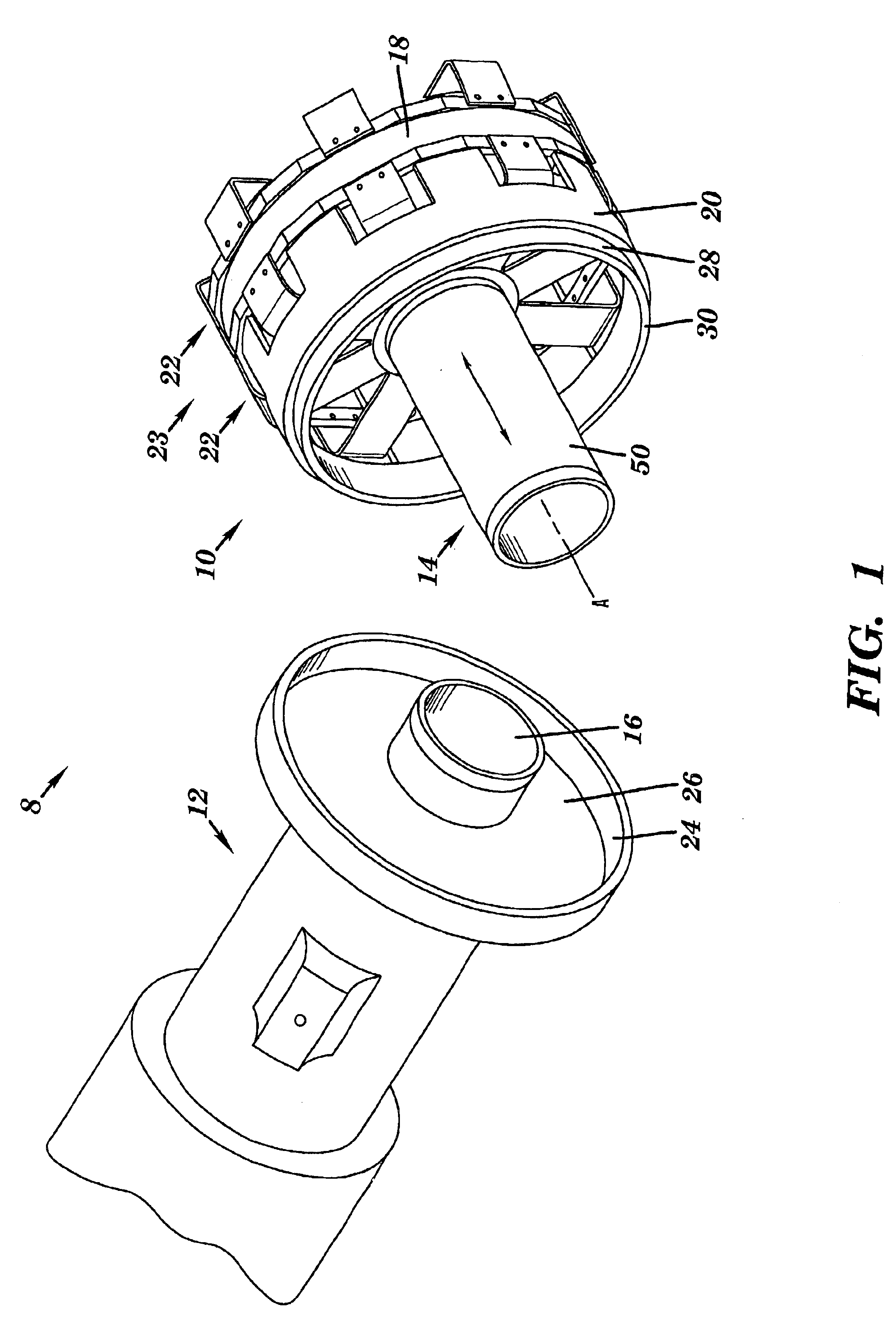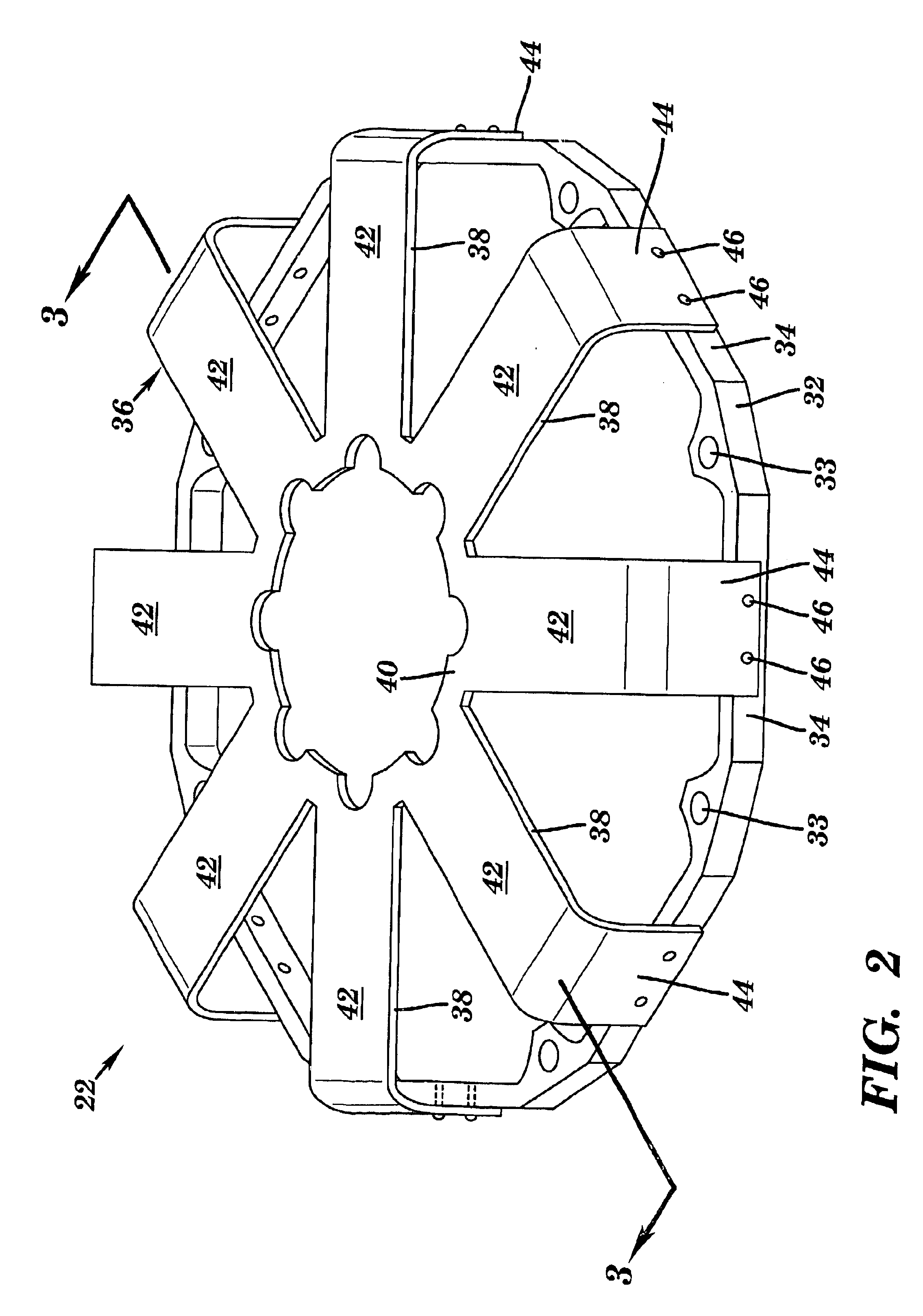Reciprocating device and linear suspension
a reciprocating device and linear suspension technology, applied in the direction of spring/damper functional characteristics, machines/engines, shock absorbers, etc., can solve the problems of vibration and failure, inducing torsional motion, fretting on the end of flexure elements, etc., to simplify the mechanical coupling structure, reduce fretting, and prolong the life
- Summary
- Abstract
- Description
- Claims
- Application Information
AI Technical Summary
Benefits of technology
Problems solved by technology
Method used
Image
Examples
first embodiment
Referring to FIG. 1, a reciprocator assembly 8 is shown that includes a reicprocator 10 and a mating cylinder assembly 12. In operation, reciprocator 10 and cylinder assembly 12 are assembled such that a moving element 14 of reciprocator 10 is linearly movable along an axis A of reciprocator 10 and in a close-clearance relation in a cylinder bore 16 of cylinder assembly 12. Reciprocator 10 includes moving element 14 and a linear drive mechanism or motor 18, similar to that disclosed in U.S. Pat. Nos. 5,389,844 and 5,139,242, which are hereby incorporated by reference. Reciprocator 10 may also include a reciprocator casing 20, sometimes called a crown ring. Linear drive mechanism 18 includes, as will be recognize by one with skill in the art, a plunger and stator and has at least one, and preferably two, linear suspension elements 22 that form a linear suspension 23 coupled thereto. Linear suspension 23 allows reciprocation and substantially restricts non-axial motion, e.g., torsiona...
second embodiment
Referring to FIGS. 11-15, another embodiment of the invention is illustrated. In any reciprocating device, there is a need to restrain the moving element to its intended axis of motion, while minimizing friction or drag associated with that restraint. Forces tending to move the reciprocating part (moving element or plunger) from its intended axis include magnetic side pull, drive force non-axiality, inertial reaction to housing motions, and non-uniform gas pressures or flows. In addition, many such devices must operate with little or no lubrication for applications where lubricant is undesirable. In such cases, ordinary sliding bearings are generally unsuitable because of wear, or lubricant to prevent wear. In such cases, flexible supports connecting the static parts (e.g., stator) and the moving element, have high stiffness in the radial sense and relatively low axial stiffness (at least over the intended reciprocation range).
As discussed above, there are two types of suspensions i...
PUM
 Login to View More
Login to View More Abstract
Description
Claims
Application Information
 Login to View More
Login to View More - R&D
- Intellectual Property
- Life Sciences
- Materials
- Tech Scout
- Unparalleled Data Quality
- Higher Quality Content
- 60% Fewer Hallucinations
Browse by: Latest US Patents, China's latest patents, Technical Efficacy Thesaurus, Application Domain, Technology Topic, Popular Technical Reports.
© 2025 PatSnap. All rights reserved.Legal|Privacy policy|Modern Slavery Act Transparency Statement|Sitemap|About US| Contact US: help@patsnap.com



